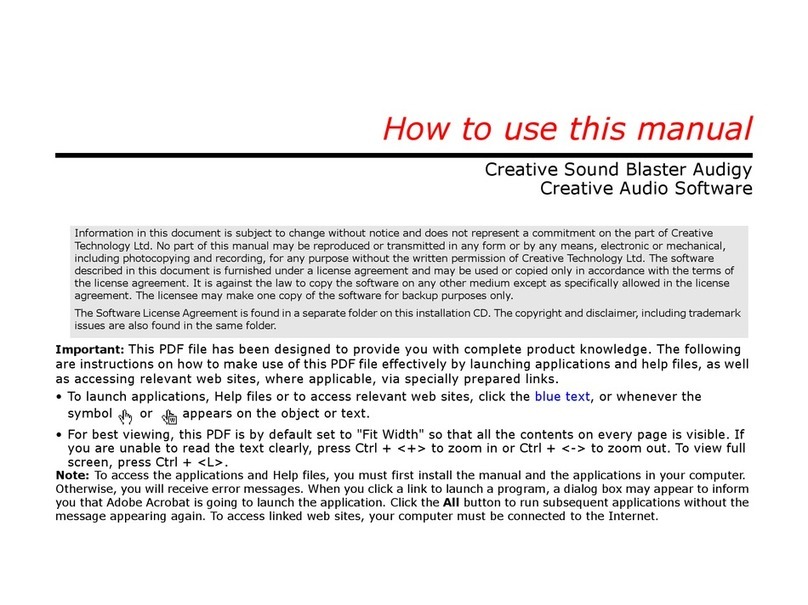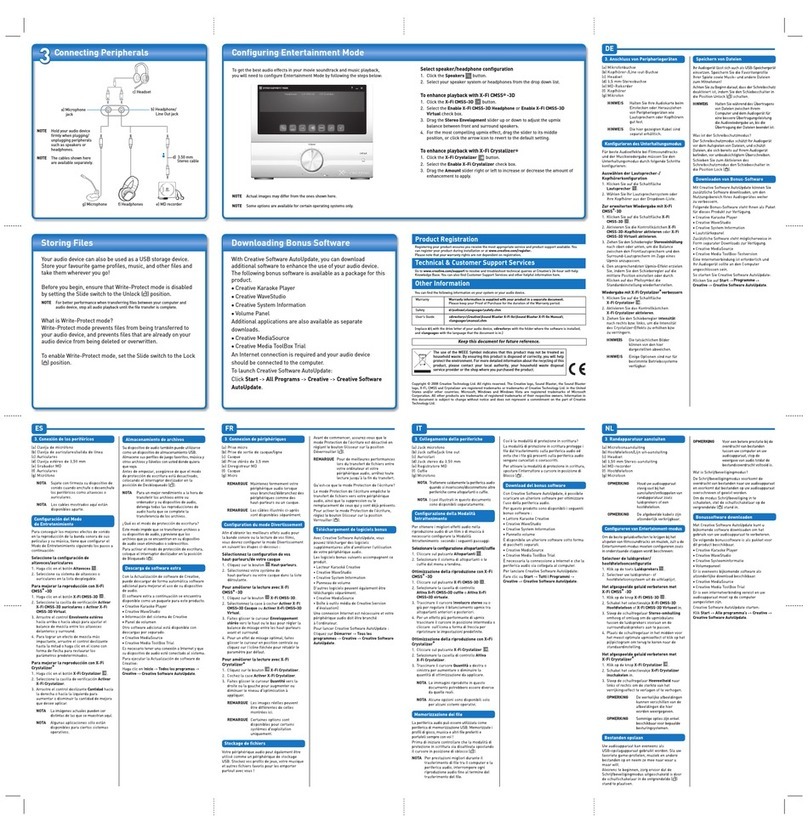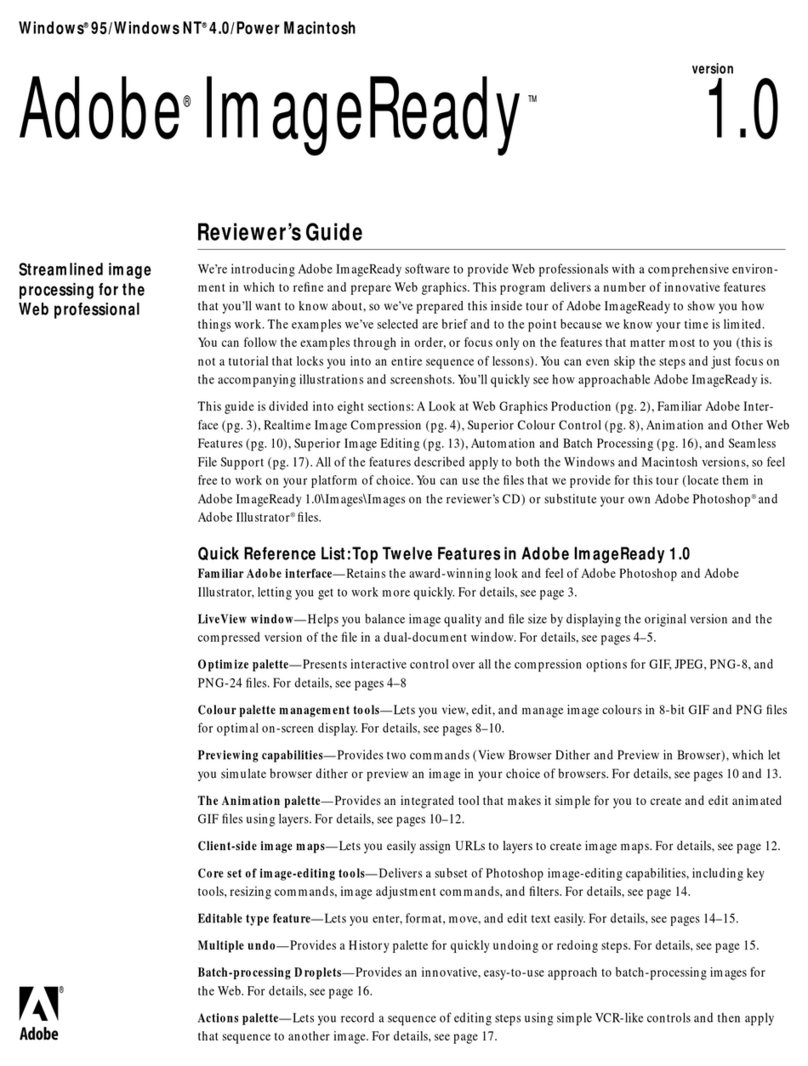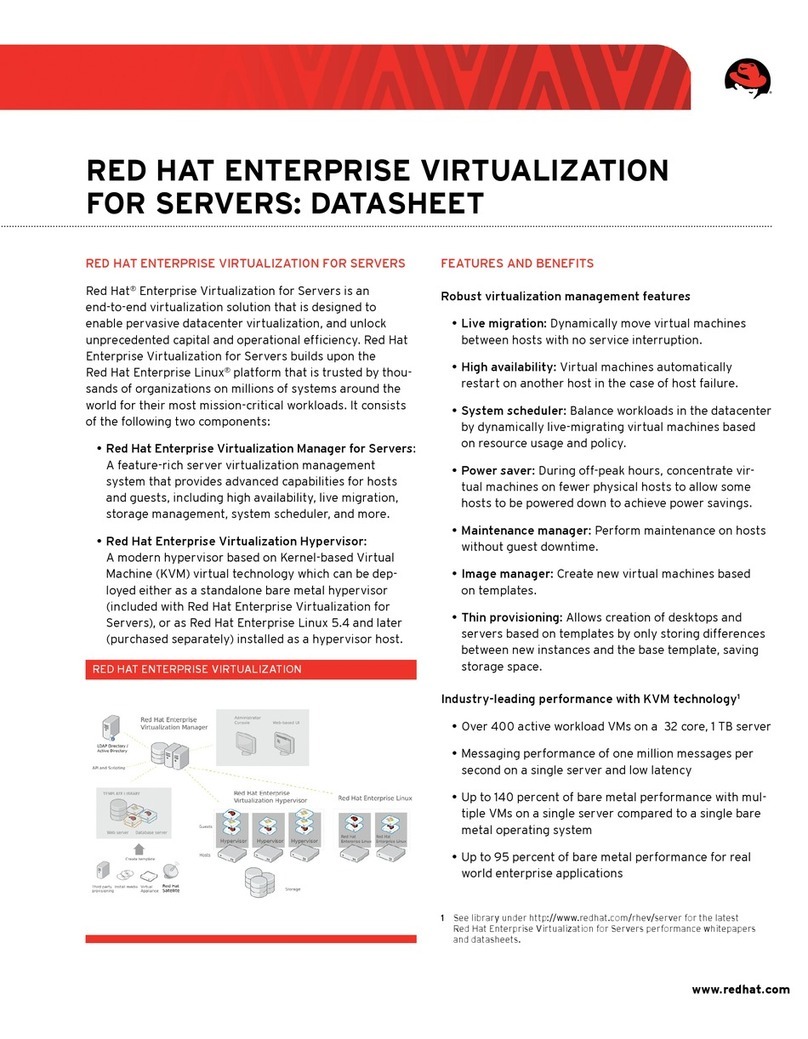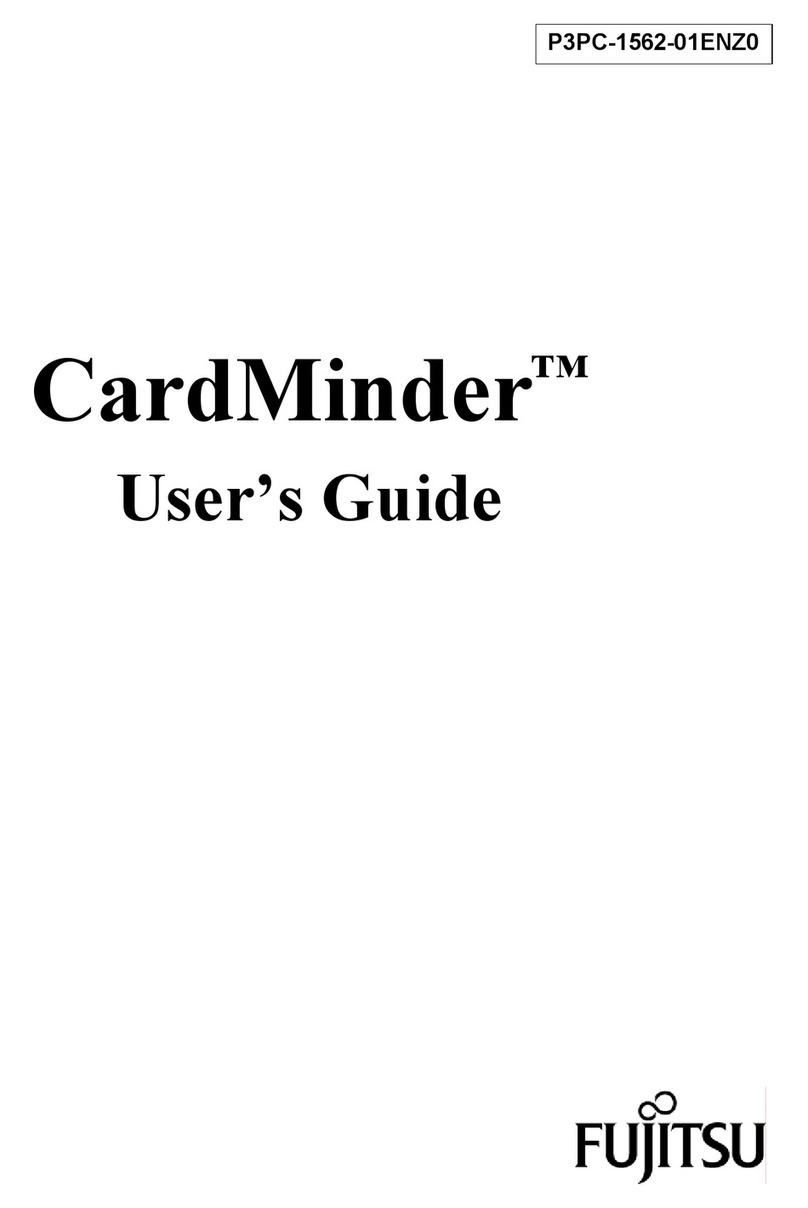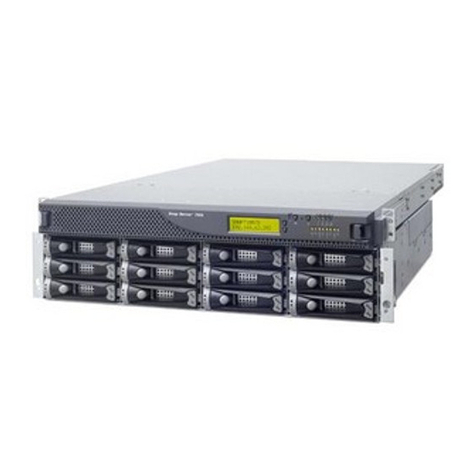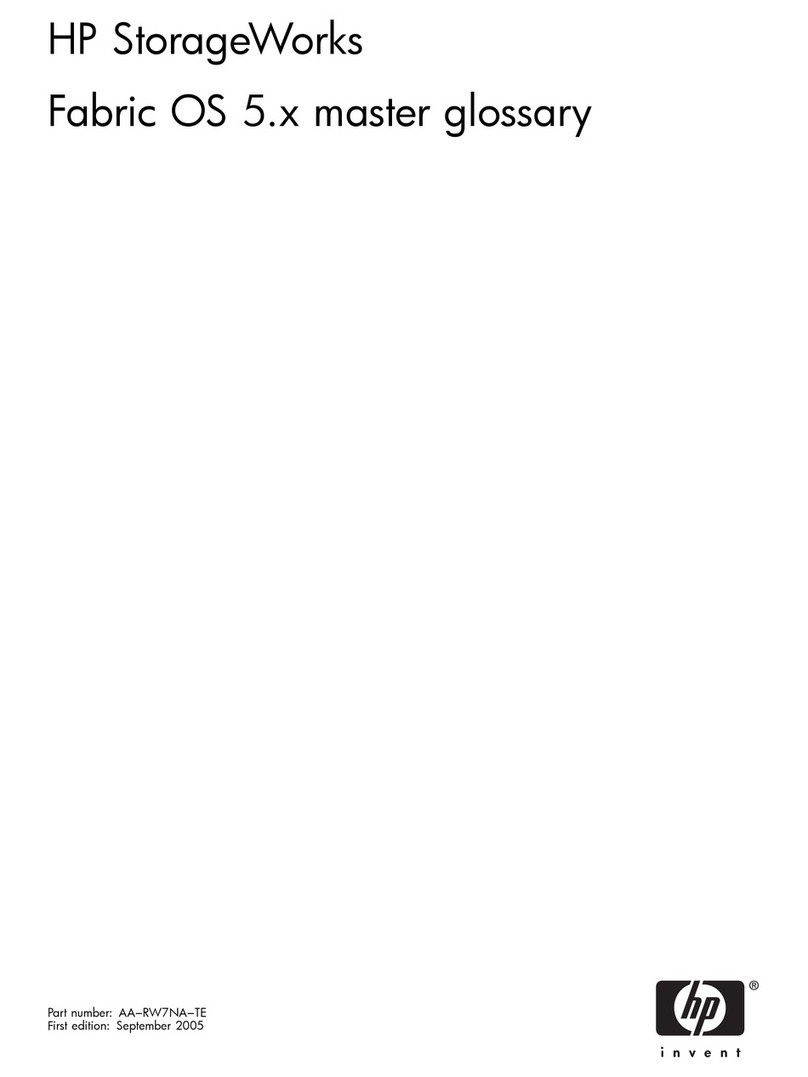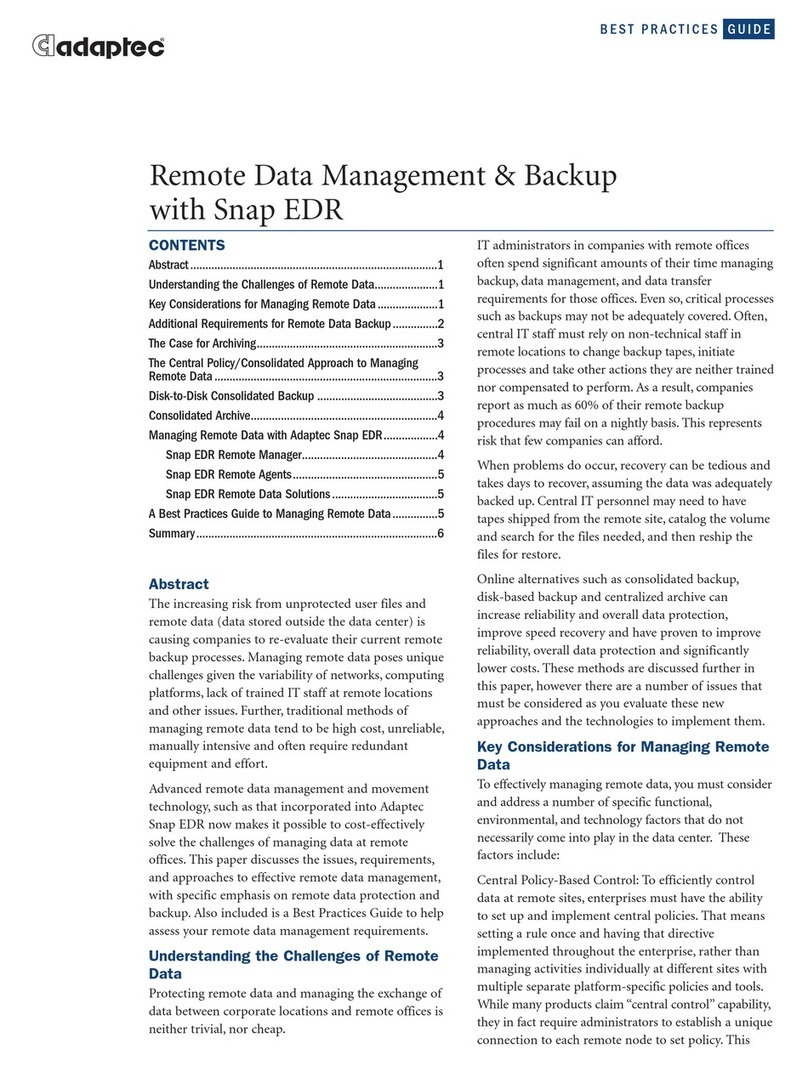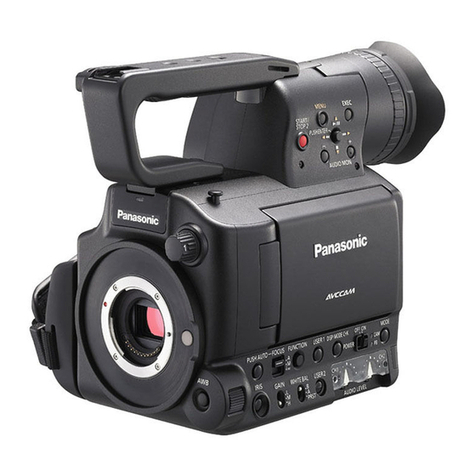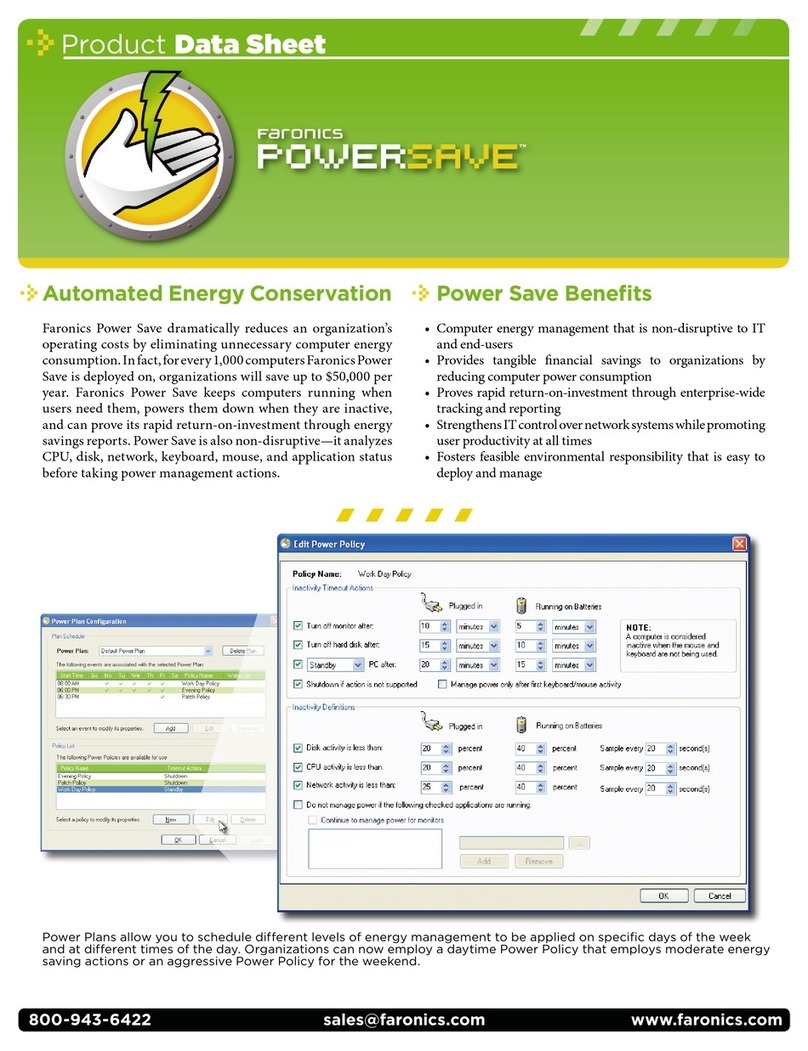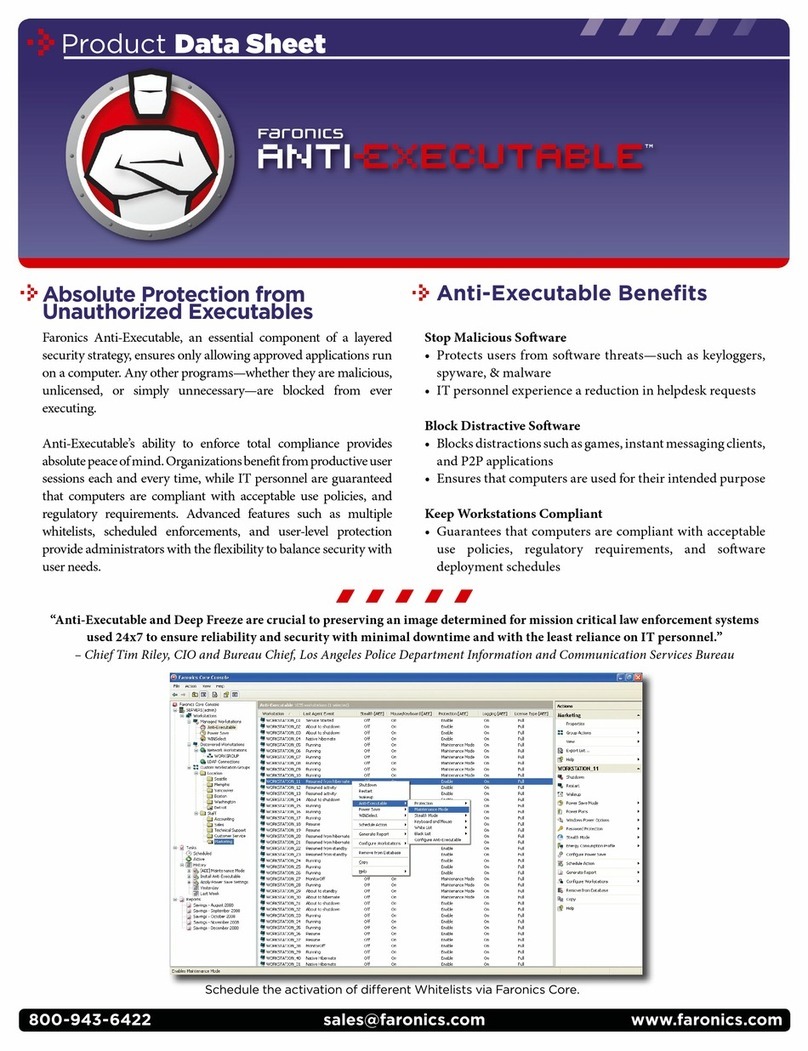Creative Sound Blaster Audigy Platinum User manual


How to use this manual
Creative Sound Blaster Audigy Platinum
Creative Audio Software
Important: This PDF file has been designed to provide you with complete product knowledge. The following
are instructions on how to make use of this PDF file effectively by launching applications and help files, as well
as accessing relevant web sites, where applicable, via specially prepared links.
• To launch applications, Help files or to access relevant web sites, click the blue text, or whenever the
symbol or appears on the object or text.
• For best viewing, this PDF is by default set to "Fit Width" so that all the contents on every page is visible. If
you are unable to read the text clearly, press Ctrl + <+> to zoom in or Ctrl + <-> to zoom out. To view full
screen, press Ctrl + <L>.
Note: To access the applications and Help files, you must first install the manual and the applications in your computer.
Otherwise, you will receive error messages. When you click a link to launch a program, a dialog box may appear to inform
you that Adobe Acrobat is going to launch the application. Click the All button to run subsequent applications without the
message appearing again. To access linked web sites, your computer must be connected to the Internet.
Information in this document is subject to change without notice and does not represent a commitment on the part of Creative
Technology Ltd. No part of this manual may be reproduced or transmitted in any form or by any means, electronic or mechanical,
including photocopying and recording, for any purpose without the written permission of Creative Technology Ltd. The software
described in this document is furnished under a license agreement and may be used or copied only in accordance with the terms of
the license agreement. It is against the law to copy the software on any other medium except as specifically allowed in the license
agreement. The licensee may make one copy of the software for backup purposes only.
The Software License Agreement is found in a separate folder on this installation CD. The copyright and disclaimer, including trademark
issues are also found in the same folder.

ii
Contents
Introduction
Welcome to high-definition digital audio entertainment ....................... ix
What is EAX ADVANCED HD? ............................................................ x
CreativeWare .................................................................................. xi
In Your Package ............................................................................. xi
System Requirements ......................................................................xii
Sound Blaster Audigy card and Audigy Drive...............................xii
SB1394 applications, games and DVD viewing ............................xii
Getting More Information................................................................ xiii
More Help ..................................................................................... xiii
Technical Support .......................................................................... xiii
Document Conventions................................................................... xiii
1 About the Sound Blaster Audigy Card and Audigy Drive
What You Need...................................................................................... 1-1
Your Sound Blaster Audigy Card ..............................................................1-2
Your Joystick/MIDI Bracket ..................................................................... 1-3
Your Audigy Drive .................................................................................. 1-4
Connecting Headphones ................................................................ 1-5
Connecting Microphones ................................................................ 1-5
Adjusting Headphones Volume and Microphone Gain.................................. 1-6
Using the Audigy Drive control knobs .............................................. 1-6
Using Creative Surround Mixer ....................................................... 1-7
Using a Remote Control with Your Computer ............................................. 1-7
2 Installing Hardware
Installation Steps ................................................................................... 2-1
Step 1: Prepare your computer ...................................................... 2-1
Step 2: Connect the Audigy Drive cables ......................................... 2-3
Step 3: Install the Audigy Drive...................................................... 2-4

iii
Step 4: Install the Sound Blaster Audigy card .................................. 2-5
Step 5: Install the Joystick/MIDI bracket (optional) .......................... 2-6
Step 6: Connect cables to Sound Blaster Audigy card........................ 2-7
Step 7: Connect to power supply .................................................... 2-9
Connecting Related Peripherals.............................................................. 2-10
Connecting Speaker Systems ................................................................ 2-12
Connecting to External Consumer Devices .............................................. 2-13
Positioning Your Speakers ..................................................................... 2-14
3 Installing Software
Installing Drivers and Applications............................................................ 3-1
Installing Ulead VideoStudio Application .......................................... 3-1
Windows 98 Second Edition ....................................................3-2
Windows Me ......................................................................... 3-2
Windows 2000 ...................................................................... 3-3
Uninstalling the Applications and Device Drivers ........................................ 3-4
Reinstalling the Device Drivers ................................................................3-4
Updating Windows 2000 (Service Pack 2) ................................................. 3-5
Updating Windows 98 SE ........................................................................ 3-5
AC-3 SPDIF output........................................................................ 3-5
1394 storage supplement .............................................................. 3-5
Installing Digital Video Update ................................................................. 3-6
4 Sound Blaster Audigy Applications
Creative Sound Blaster Audigy Applications............................................... 4-1
Third Party Sound Blaster Audigy Applications ........................................... 4-2
Creative Taskbar.................................................................................... 4-2
Creative Sound Blaster Audigy Online Quick Start ...................................... 4-2
Creative Sound Blaster Audigy Experience ................................................4-3
EAX Advanced HD Gold Mine Experience................................................... 4-3
Creative Diagnostics............................................................................... 4-3

iv
Creative Surround Mixer ......................................................................... 4-3
Creative AudioHQ................................................................................... 4-4
SoundFont Control ........................................................................ 4-4
Device Controls ............................................................................ 4-5
Creative Keyboard ........................................................................ 4-5
MIDI Input............................................................................ 4-5
EAX Control.................................................................................. 4-5
Creative WaveStudio .............................................................................. 4-6
Creative PlayCenter................................................................................ 4-6
Creative Recorder .................................................................................. 4-6
Creative Oozic Reactor............................................................................ 4-7
Vienna SoundFont Studio........................................................................ 4-7
Creative MiniDisc Center ......................................................................... 4-8
Creative RemoteCenter........................................................................... 4-9
SoundFont Showcase ............................................................................. 4-9
Creative Restore Defaults........................................................................ 4-9
Steinberg’s Audio Applications ............................................................... 4-10
Cubasis VST (for Creative)........................................................... 4-10
WaveLab Lite ............................................................................. 4-10
ReCycle Lite ............................................................................... 4-10
MixMeister........................................................................................... 4-11
Ulead VideoStudio Version 4.0 SE Basic .................................................. 4-11
FireNet ............................................................................................... 4-11
5 Using Applications
Multimedia Playback ............................................................................... 5-1
Watching DVDs ............................................................................ 5-1
Playing MP3 or WMA files............................................................... 5-1
Playing back Wave and CD Audio files ............................................. 5-2
Playing MIDI files.......................................................................... 5-2
Creating non-General-MIDI-compliant files ...................................... 5-2

v
Digital Entertainment.............................................................................. 5-2
Watching surround movies............................................................. 5-2
Compiling personal albums ............................................................ 5-2
Content Creation.................................................................................... 5-3
Organizing SoundFont banks.......................................................... 5-3
Applying voice effects.................................................................... 5-3
Recording sound and effects .......................................................... 5-3
Capturing and editing videos .......................................................... 5-3
Advanced Content Creation ..................................................................... 5-4
Recording multi-tracks with ASIO ................................................... 5-4
Creating music ............................................................................. 5-4
Recording and transcribing music ................................................... 5-4
Recording and editing musical instruments ...................................... 5-4
Recording digital audio ................................................................... 5-5
Creating multiple effects ................................................................ 5-5
Creating and playing back SoundFonts ............................................ 5-5
Internet Entertainment ........................................................................... 5-5
Experiencing music with visual entertainment .................................. 5-5
Encoding CD songs to MP3 format .................................................. 5-5
Downloading and playing MP3 songs ............................................... 5-6
Playing MP3 songs with EAX........................................................... 5-6
Mixing MP3 songs ......................................................................... 5-6
Gaming Reference.................................................................................. 5-6
Enjoying EAX support.................................................................... 5-6
Enjoying DirectSound3D support .................................................... 5-6
Enjoying A3D 1.0 support .............................................................. 5-6
Enjoying DOS games..................................................................... 5-7
Enjoying audio presets in games .................................................... 5-7
Customizing environments for non-3D games .................................. 5-7

vi
Appendixes
A General Specifications
Features ...............................................................................................A-1
PCI Bus Mastering .................................................................A-1
Audigy Processor ...................................................................A-1
High Quality Audio Path..........................................................A-1
Professional Digital Audio Processing........................................A-2
Flexible Mixer Control.............................................................A-2
Dolby Digital (AC-3) Decoding.................................................A-2
Creative Multi Speaker SurroundTM (CMSSTM) .........................A-3
SB1394TM Compatibility.........................................................A-3
Connectivity ..........................................................................................A-4
Sound Blaster Audigy card ............................................................. A-4
Audio Inputs .........................................................................A-4
Audio Outputs .......................................................................A-4
SB1394 Interfaces .................................................................A-5
Interfaces .............................................................................A-5
Audigy Drive ................................................................................ A-5
Audio/Video Inputs and Outputs On Front Panel........................A-5
Interfaces .............................................................................A-6
B SB Emulation in MS-DOS/Windows 98 SE
Background...........................................................................................B-1
Installing MS-DOS Drivers.......................................................................B-1
Opening MS-DOS ...................................................................................B-1
Understanding the Installation Program ....................................................B-2
AUTOEXEC.BAT File Settings .......................................................... B-2
CONFIG.SYS File Settings .............................................................. B-3
System Resource Settings.......................................................................B-3
Input/Output (I/O) Addresses ........................................................ B-4

vii
Interrupt Request (IRQ) Line.......................................................... B-4
Direct Memory Access (DMA) Channel............................................. B-5
Environment Variables............................................................................B-5
CTSYN Environment Variable.......................................................... B-5
BLASTER Environment Variable ...................................................... B-5
Determining Resources...........................................................................B-6
Selecting the Best Audio Options in a Game ..............................................B-7
Music Options............................................................................... B-8
Digital Audio Options..................................................................... B-8
MS-DOS Mode Utilities............................................................................B-8
SBECFG.EXE ................................................................................ B-8
SBEMIXER.EXE ............................................................................. B-9
SBESET.EXE............................................................................... B-10
SBEGO.EXE................................................................................ B-11
C Troubleshooting
Problems Installing Software ...................................................................C-1
Problems with Sound..............................................................................C-2
Insufficient SoundFont Cache ..................................................................C-5
Problems With Joystick ...........................................................................C-5
Problems with Multiple Audio Devices .......................................................C-6
Problems with Sound Blaster Live! Series or Sound Blaster PCI512 card .......C-7
Resolving I/O Conflicts............................................................................C-8
Problems in Windows NT 4.0 ...................................................................C-9
Problems with Encore DVD Player .......................................................... C-10
Problems with Software DVD Player ....................................................... C-10
Problems with DV driver for Windows 98 SE/2000/Me .............................. C-11
Index

Introduction ix
Introduction
Welcome to high-
definition digital
audio entertainment
Thank you for purchasing Sound Blaster Audigy Platinum, which consists of the
Sound Blaster Audigy card, the Audigy Drive and the IR remote control. It is the
most complete high-definition digital audio entertainment solution that you will ever
come across.
With the onboard 24-bit Analog-to-Digital Converter (ADC) and Digital-to-Analog
Converter (DAC), Sound Blaster Audigy Platinum delivers high-definition sound of
astounding quality with 96 kHz SPDIF support. The Sound Blaster Audigy card, with
its Audigy processor, is four times as powerful as its nearest competitor. This enables
awesome EAX ADVANCED HDTM technologies for your games and music listening
experience.
The Audigy Drive is designed for your convenience. On its front panel, you can plug
in your microphone and headphones, and adjust the gain/volume. The Audigy Drive
also provides Creative SB1394, MIDI, and digital connectors for your audio/video
recording and content authoring purposes. The SB1394 port provides easy high-
speed connectivity to NOMAD portable digital audio players, external
CD-RW drives and other IEEE 1394 compatible devices like DV Camcorders,
printers, scanners and digital still cameras.
In addition, the Audigy Drive can be used with an IR remote control. The infrared
receiver on the Audigy Drive lets you control your computer and perform tasks (such
as playing audio CDs and video CDs) up to a distance of four meters.
Combine Sound Blaster Audigy Platinum with a rich software bundle and you get
endless hours of fun. Included in your Sound Blaster Audigy Installation CD are
exciting applications that allow you to create EAX-enhanced MP3 songs, and instant
interactive Oozic music videos, which you can share with your friends over the
Internet.

Introduction x
What is EAX
ADVANCED HD?
EAX ADVANCED HD brings a new level of performance, power and flexibility to PC
audio. Taking advantage of the increased processing capabilities of the Sound
Blaster Audigy HDA Processor, EAX ADVANCED HD delivers a host of new high
definition audio features for gaming and music enhancement.
The all-new EAX ADVANCED HD Game Audio Library takes in-game audio acoustics
to a whole new level. New Multi-EnvironmentTM technology renders up to 4
simultaneous audio environments in real time. Environment PanningTM makes
spatializing and localizing environments in 3D possible. Environment ReflectionsTM
offers localization of early reflections and echoes. Environment FilteringTM
accurately simulates the propagation of sound in both open and closed
environments. Finally, Environment MorphingTM allows for seamless transition from
one environment to the next. These innovative technologies bring tremendous
realism and immersiveness to gaming.
Sonic superiority is also assured with EAX ADVANCED HD Music Technologies. Audio
Clean-Up enables the removal of unwanted noise in a digital audio file. DREAMTM
creates an enhanced, "disco-like" surround sound for any stereo music. Time Scaling
speeds up and slows down music with no distortion. Music playback is further
enhanced with the specially developed EAX ADVANCED HD music effects.
EAX ADVANCED HD offers dramatically increased 3D audio performance and
functionality, delivering superior audio fidelity and sophisticated reverb effects for
an unsurpassed digital entertainment experience that is only available from the
Sound Blaster Audigy family of products.

Introduction xi
CreativeWare CreativeWare is a post-purchase programme that adds new features, enhancements
and additional functionality to Creative’s upgradeable products. With CreativeWare,
you can always be sure of having the best digital entertainment experience because:
- You can easily upgrade your Sound Blaster Audigy card with the latest features,
device drivers, and applications.
- You can personalize the functions on your Sound Blaster Audigy card.
In Your Package The following items are included in your package:
❑Sound Blaster Audigy card
❑Audigy Drive and IR remote control
❑Joystick/MIDI bracket
❑Internal SB1394 cable
❑Wide gray cable
❑Analog CD audio cable
❑Digital CD audio cable
❑Power splitter cable
❑Mini-DIN-to-standard-DIN adapter
❑3.5 mm minijack to ¼” jack adapter
❑4 screws + shunt (for microphone selection)
❑2 non-alkaline AAA batteries (twin pack) for the IR remote control
❑Sound Blaster Audigy Installation CD
❑Application and game CDs
❑Quick Start leaflet
❑Warranty card
❑Technical Support leaflet
The items listed here may
differ for certain countries.

Introduction xii
System
Requirements
Sound Blaster Audigy
card and Audigy Drive
❑Genuine Intel®Pentium®266 MHz, AMD®K6 300 MHz or faster processor
❑Intel, AMD or 100% compatible motherboard chipset
❑Windows 98 Second Edition (SE), Windows Millennium Edition (Me), Windows
NT 4.0 or Windows 2000
❑64 MB RAM
❑600 MB of free hard disk space
❑Available PCI 2.1 compliant slot for the Sound Blaster Audigy card
❑Available adjacent slot for the Joystick/MIDI bracket (optional)
❑Available 5 ¼” drive bay for the Audigy Drive
❑Headphones or amplified speakers (available separately)
❑CD-ROM drive installed
SB1394 applications,
games and DVD
viewing
❑Genuine Intel Pentium II 350 MHz, MMX or AMD 450 MHz processor/3Dnow!
❑Windows 98 SE, Windows Me or Windows 2000 (Creative PlayCenter on Windows
NT 4.0 requires Service Pack 6 with Internet Explorer 4.0)
❑3D graphics accelerator with at least 8 MB of texture RAM for games
❑128 MB RAM recommended for digital video (DV) capture and editing
❑Ultra DMA type hard disk space with 1 GB workspace (ATA-100, 7,200 rpm type
and 6 GB recommended) for DV applications (300—500 MB of free hard disk
space for games)
❑At least second generation DVD-ROM drive with these recommended soft-DVD
players: InterVideo’s WinDVD 2000 or CyberLink’s PowerDVD 3.0 and above
Other applications may have higher system requirements or may require a
microphone. Refer to the individual application’s online Help for details.

Introduction xiii
Getting More
Information
Refer to the Sound Blaster Audigy Online Quick Start and the various online Help
files for detailed information on Creative applications. The Sound Blaster Audigy
Experience, an online demo, gives you an interactive introduction to Sound Blaster
Audigy and demonstrates the card’s capabilities.
More Help View the contents of the Sound Blaster Audigy Installation CD for additional
demonstrations, libraries and other software. Visit the www.soundblaster.com site
for the latest Sound Blaster news and products. The site also includes information
on making purchases, technical help, and CreativeWare updates.
Technical Support Visit http://www.soundblaster.com/support/faq/ for general help.
Document
Conventions
The following typographical conventions are used throughout this manual:
The notepad icon indicates information that is of particular
importance and should be considered before continuing.
The alarm clock designates a caution or warning that can help
you avoid situations involving risk.
The warning sign indicates that failure to adhere to directions
may result in bodily harm or life-threatening situations.

About the Sound Blaster Audigy Card and Audigy Drive 1-1
About the Sound Blaster Audigy Card and Audigy Drive
What You Need Before you begin installation, be sure that you have these:
In addition, you will also
need an available PCI slot
and another adjacent
available slot on your
computer.
Sound Blaster Audigy card
Sound Blaster Audigy Drive
Joystick/MIDI bracket
Internal SB1394 cable
Philips-head screwdriver
(not included)
Wide gray cable
Digital CD audio cable
Screws
Analog CD audio cable
Shunt

About the Sound Blaster Audigy Card and Audigy Drive 1-2
Your Sound
Blaster Audigy
Card
Your audio card has these jacks and connectors that allow you to attach other
devices:
In Analog mode, Line Out
and Rear Out jacks can be
used simultaneously for 4.1
channel speaker systems.
The Analog/Digital Out jack
can be used for the Center
and Subwoofer (LFE)
channels for 5.1 speaker
systems.
A jack is a one-hole
connecting interface whilst a
connector consists of many
pins. Refer to the User
Guide, “Hardware
Information”, for connector
pin assignments.
CD Audio connector (CD_IN)
Connects to the Analog Audio output on a CD-ROM
or DVD-ROM drive using a CD audio cable.
SB1394 port (SB1394)
Connects to an IEEE1394 compatible external
device (such as a digital video camcorder,
digital still camera, printer or scanner).
Line In jack (LIN_IN)
Connects to an external device
(such as a cassette, DAT or
MiniDisc player).
Microphone In jack (MIC_IN)
Connects to an external
microphone for voice input.
Figure 1-1: Jacks, connectors and ports on the Sound Blaster Audigy card.
Rear Out jack (LIN_OUT2)
Connects to powered speakers or
an external amplifier for audio
output.
Line Out jack (LIN_OUT1)
Connects to powered speakers or
an external amplifier for audio
output. Also supports
headphones.
Telephone Answering Device
connector (TAD)
Provides a mono connection from a
standard voice modem, and transmits
microphone signals to the modem.
AUX In connector (AUX_IN)
Connects to internal audio sources such as
TV Tuner, MPEG, or other similar cards.
CD SPDIF connector (CD_SPDIF)
Connects to the SPDIF (Digital Audio)
output (where available) on a CD-
ROM or DVD-ROM drive.
Internal SB1394 port
Connects to J5 on the Audigy Drive.
Joystick/MIDI connector
(JOYSTICK)
Connects to the Joystick/MIDI
cable.
Analog/Digital Out jack
6-channel or compressed AC-3
SPDIF output for connection to
external digital devices or digital
speaker systems.
Also supports Center and Subwoofer
analog channels for connection to
5.1 analog speaker systems.
Audio Extension (Digital I/O)
connector (AUD_EXT)
Connects to the external Audigy
Drive or Digital I/O card.
Warning: This is not an IDE
interface. Do not connect it to
your IDE devices.

About the Sound Blaster Audigy Card and Audigy Drive 1-3
Your Joystick/
MIDI Bracket
Your Joystick/MIDI bracket provides connectivity to joysticks or MIDI devices:
Rear view of connector bracket
Figure 1-2: Joystick/MIDI bracket.
Joystick/MIDI connector
Connects to a joystick or MIDI device. You can buy an
optional MIDI kit that allows you to plug in a joystick and
MIDI devices simultaneously.

About the Sound Blaster Audigy Card and Audigy Drive 1-4
Your Audigy
Drive
T h e f r o n t p a n e l o f y o u r A u d i g y D r i v e h a s t h e s e j a c k s , c o n n e c t o r s a n d c o n t r o l s :
MIDI In/Out connectors
Connects to MIDI devices using
the mini DIN-to-Standard DIN
adapter provided.
Line In 2/Mic In 2 selector
(Microphone Gain Control)
To switch to Line In 2, turn the knob counter
clockwise over the Line In 2/Mic In 2
separator mark until you hear a “click” sound.
To switch back to Mic In 2, turn the knob
clockwise over the separator mark until you
hear a “click” sound. To control the
microphone gain, continue to turn clockwise.
See “Adjusting Headphones Volume and
Microphone Gain” on page 1-6.
¼” Line In 2/Mic In 2 jack
Connects to a high-quality dynamic
microphone or audio devices such as
electric guitars and DAT or MiniDisc
players.
RCA Auxiliary In jacks
Connects to consumer equipment such as VCR, TV
and CD players, via RCA Auxiliary audio outputs.
Optical SPDIF In/Out connectors
Connects to digital audio devices such
as DAT and MiniDisc recorders, via
optical input/output.
Headphones Volume Control
Controls the headphones output volume.
See “Adjusting Headphones Volume and
Microphone Gain” on page 1-6.
RCA SPDIF In/Out
jacks
Connects to digital audio
devices such as DAT and
MiniDisc recorders, via
RCA input/output.
¼” Headphones jack
Connects to a pair of high-quality
headphones. Your speaker output
is muted when you connect the
headphones to the drive.
Figure 1-3: Jacks, connectors and controls on the Audigy Drive.
Line In 2/Mic In 2
separator mark
Infrared Receiver
Lets you control your computer using
the IR remote control.
SB1394
connector
Connects to IEEE
1394 compatible
devices.
• To connect your existing
computer headphones and
microphone to the Audigy
Drive, use a 3.5mm to ¼”
adapter (optional).
• Set the gain of the Mic In 2
jack to the minimum before
connecting or turning on a
microphone, especially if
you are using headphones.

About the Sound Blaster Audigy Card and Audigy Drive 1-5
Connecting
Headphones
There are two types of headphones that you can connect to your Audigy Drive:
❑Home audio or professional audio headphones, which are usually fitted with a ¼"
stereo plug.
❑Personal stereo headphones, which are usually fitted with a 3.5 mm stereo plug,
such as those used for portable audio players.
Connecting
Microphones
There are two types of microphones that you can connect to your Audigy Drive:
❑Dynamic microphone, which is usually fitted with a ¼" stereo plug, such as those
used in vocal performances.
❑Condenser microphone, which is usually fitted with a 3.5 mm stereo plug, such
as the microphone bundled with Creative audio products.
By default, your Audigy Drive is set for use with a condenser microphone. To use a
dynamic microphone, you must place the shunt (jumper cap) onto Jumper JP1 on
your Audigy Drive. See Figure 2-3 on page 2-3 for the location of Jumper JP1 on
your Audigy Drive.
• The Jumper JP1 may not be
available on certain models
of Audigy Drive.
• The shunt for Jumper JP1
can be found together with
the packet of screws
provided.
Shunt
To us e a dy na m ic
microphone, place the
shunt onto Jumper JP1.
To use a condenser
microphone,
remove the shunt
from Jumper JP1
(default setting). Jumper JP1
Jumper JP1
Shunt
Figure 1-4: Microphone jumper settings.
This manual suits for next models
2
Table of contents
Other Creative Software manuals
Popular Software manuals by other brands
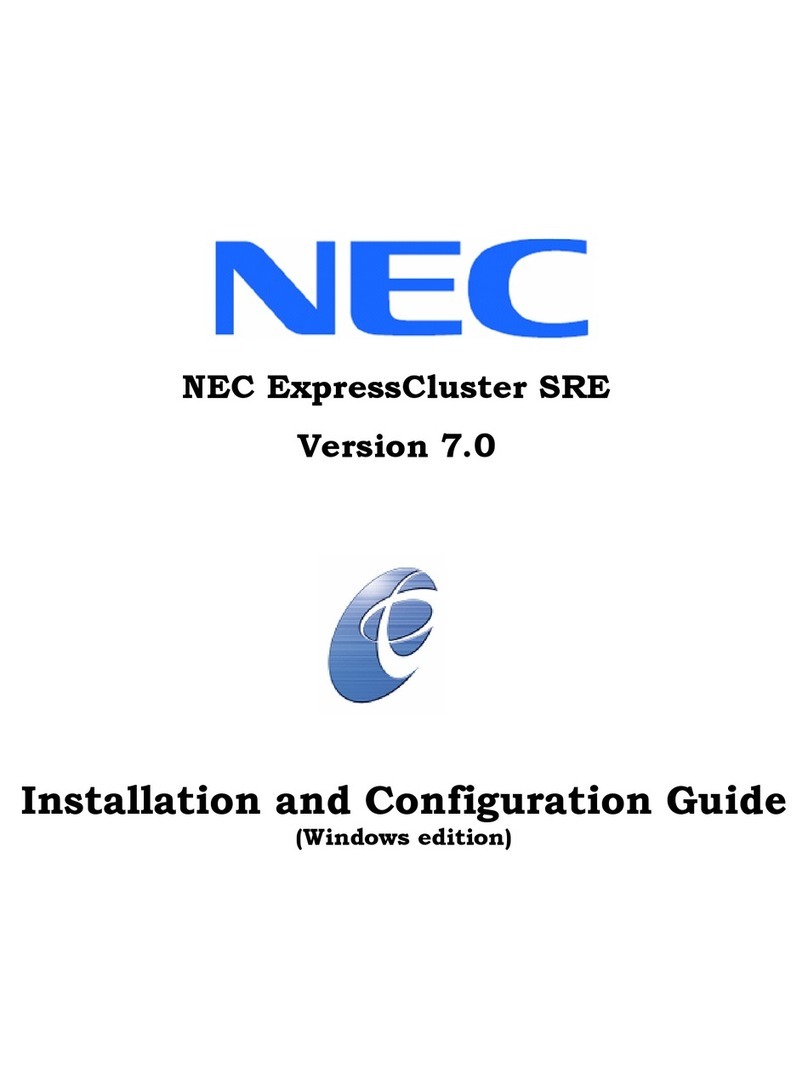
NEC
NEC ExpressCluster SRE Installation and configuration guide
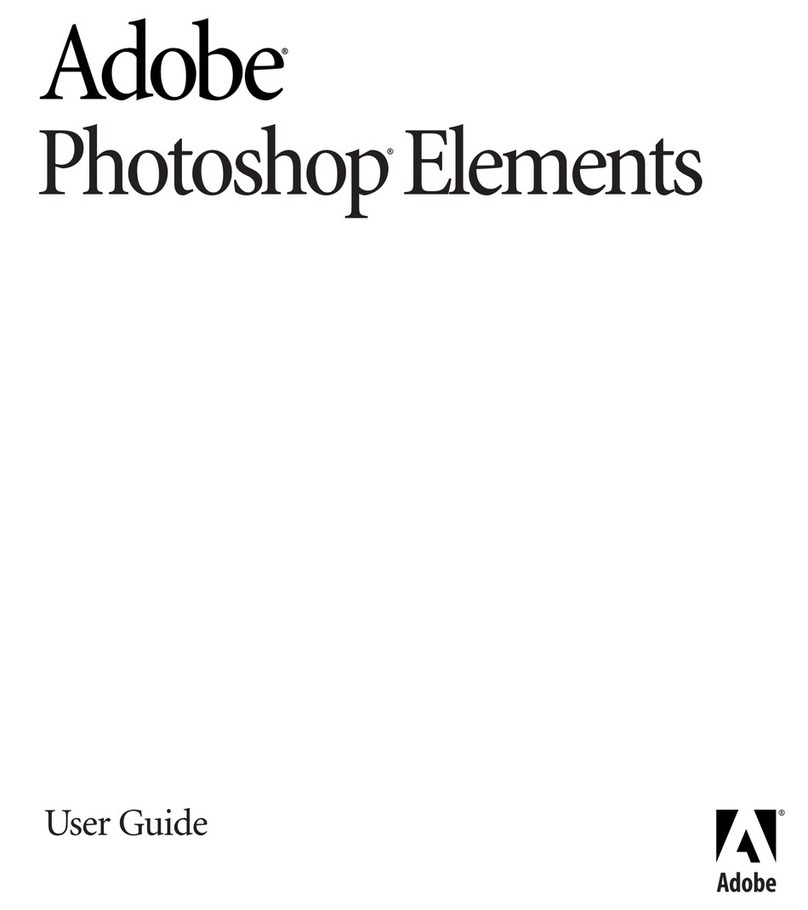
Adobe
Adobe PHOTOSHOP ELEMENTS manual
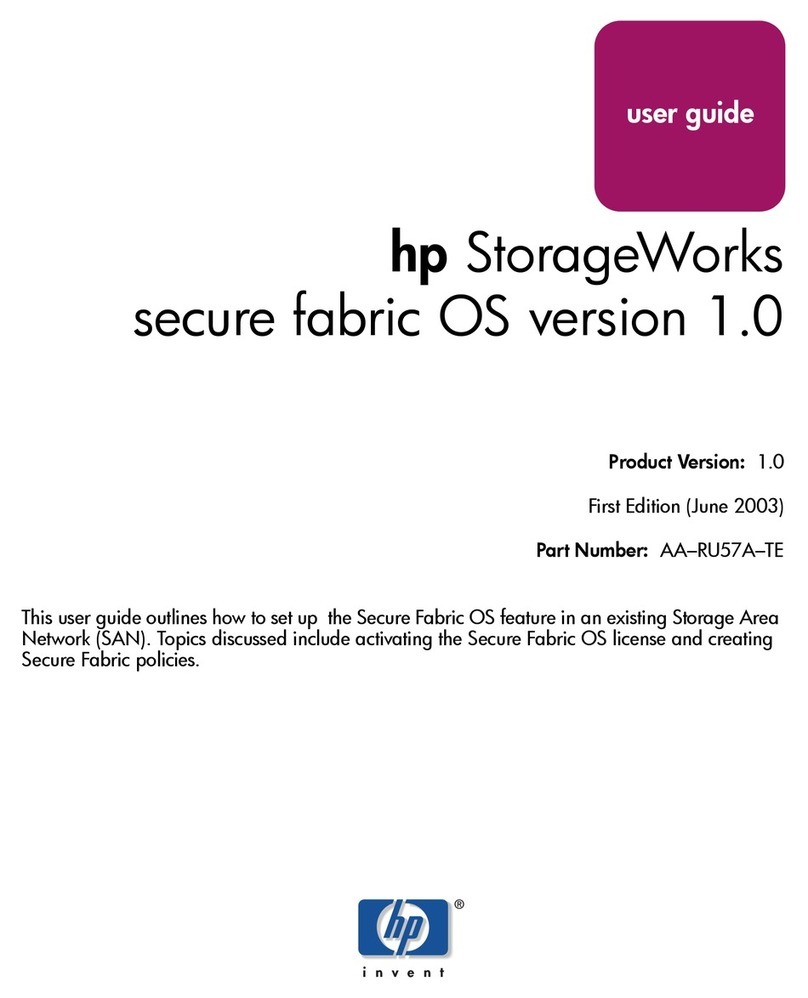
HP
HP StorageWorks MSA 2/8 - SAN Switch user guide
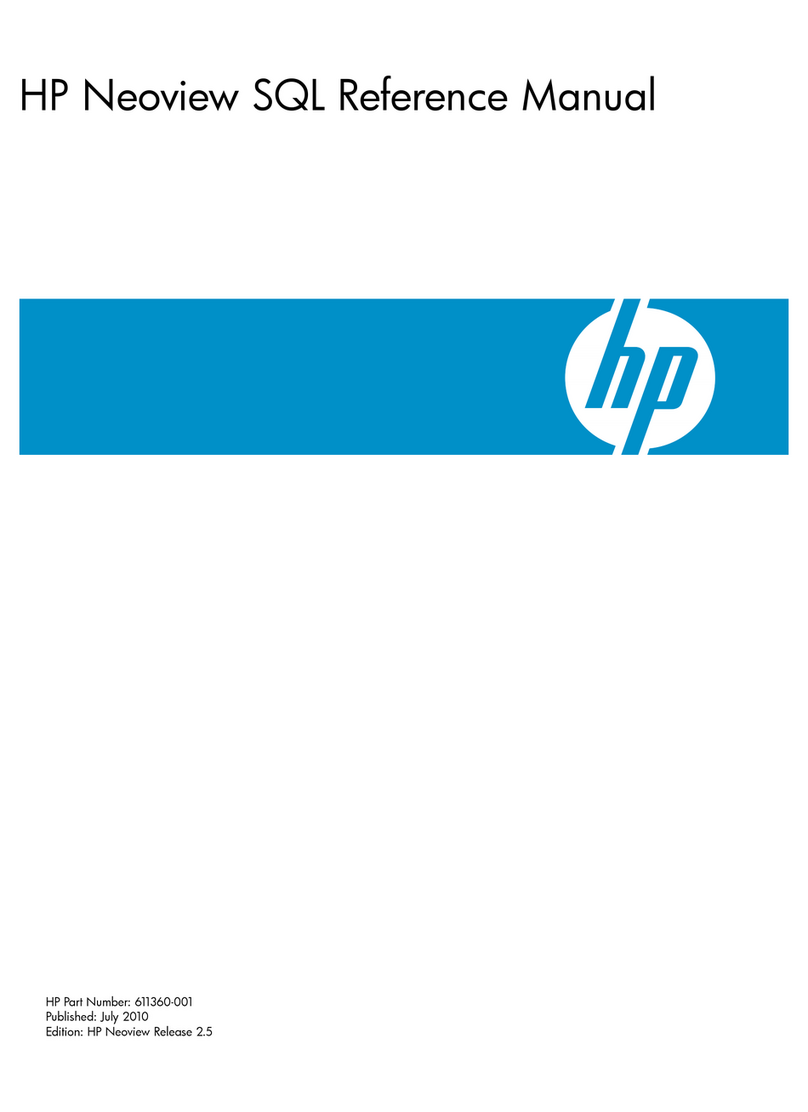
HP
HP Neoview SQL Reference manual
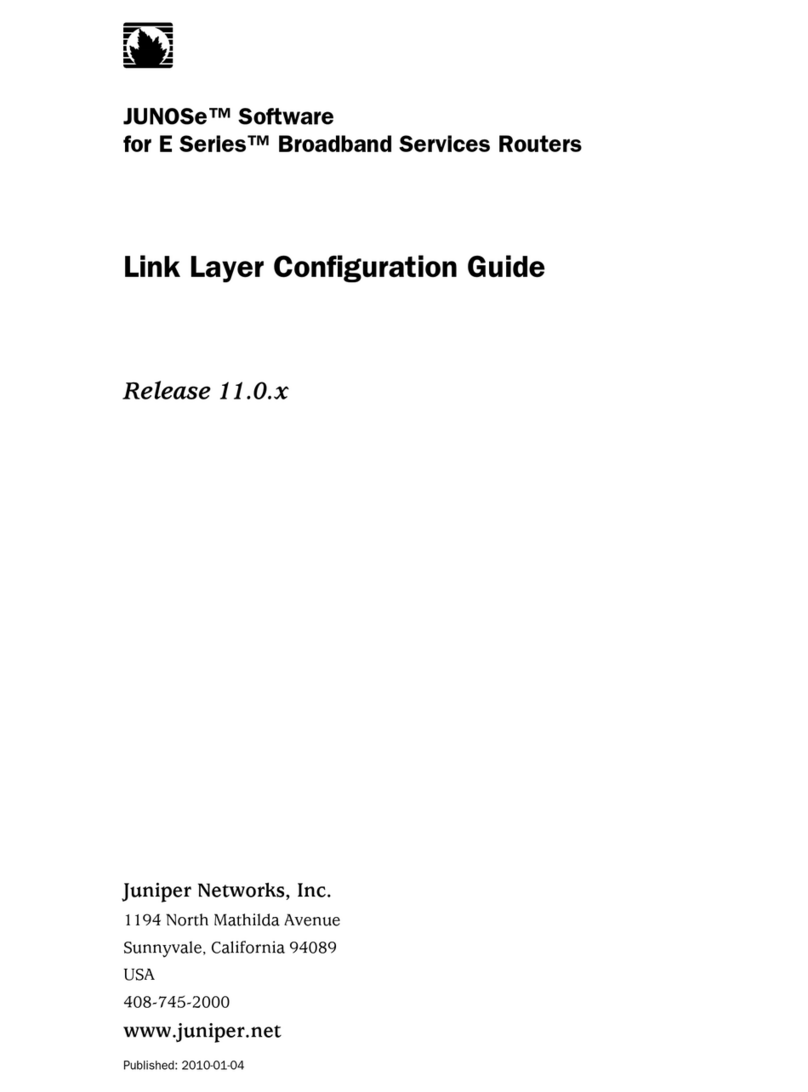
Juniper
Juniper JUNOSE SOFTWARE 11.0.X - LINK LAYER CONFIGURATION GUIDE... Configuration guide
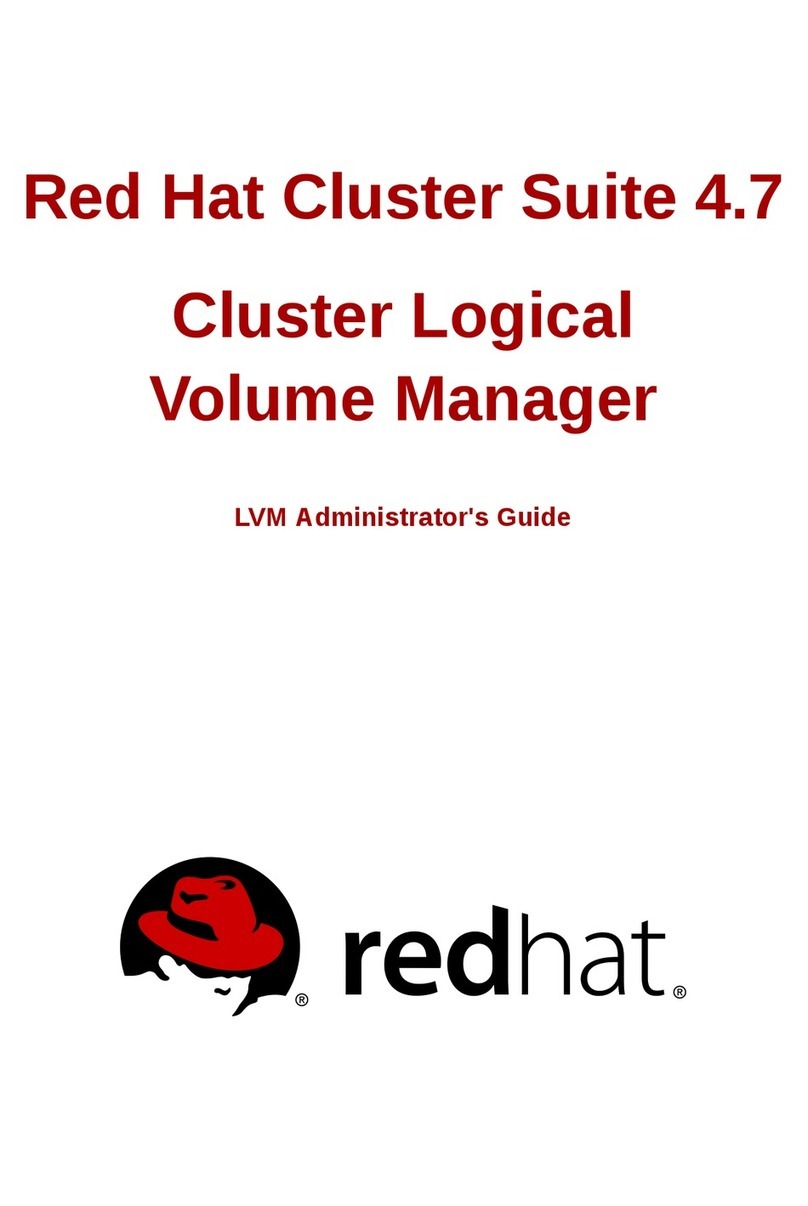
Red Hat
Red Hat CLUSTER SUITE 4.7 - CLUSTER LVM... manual


